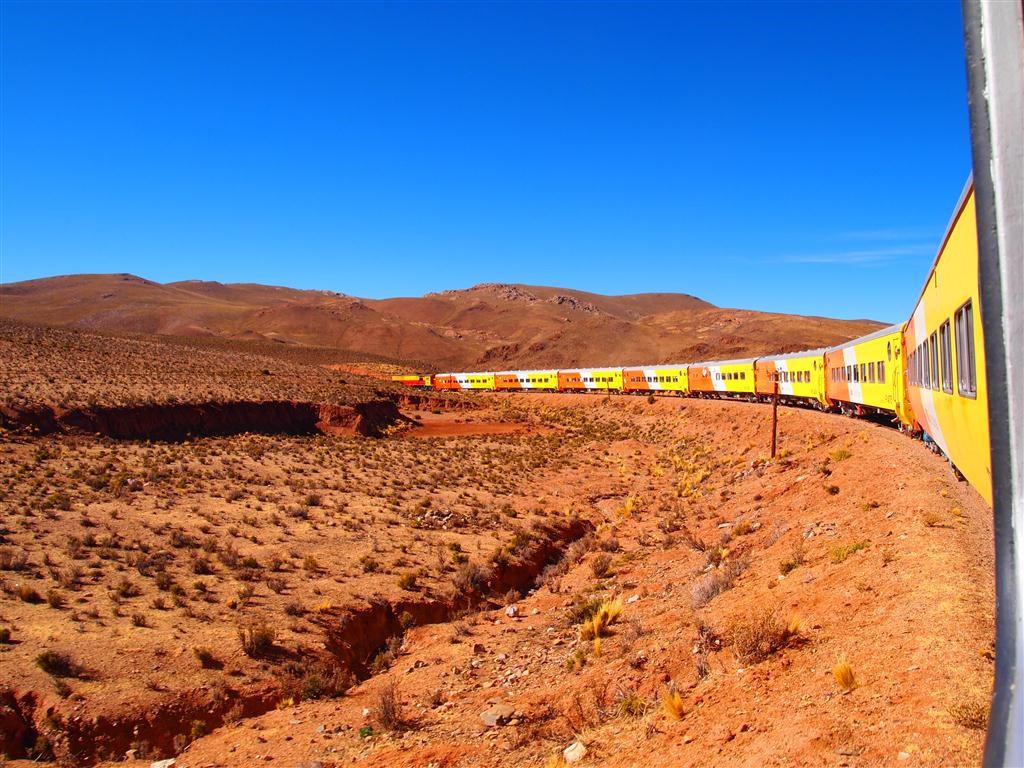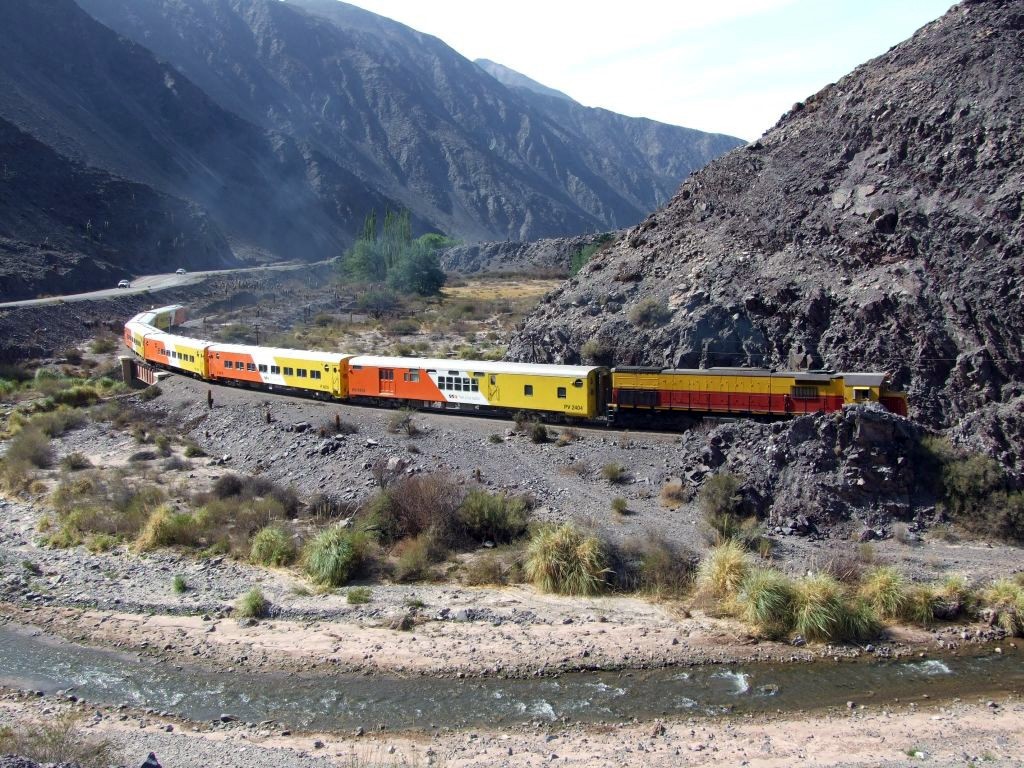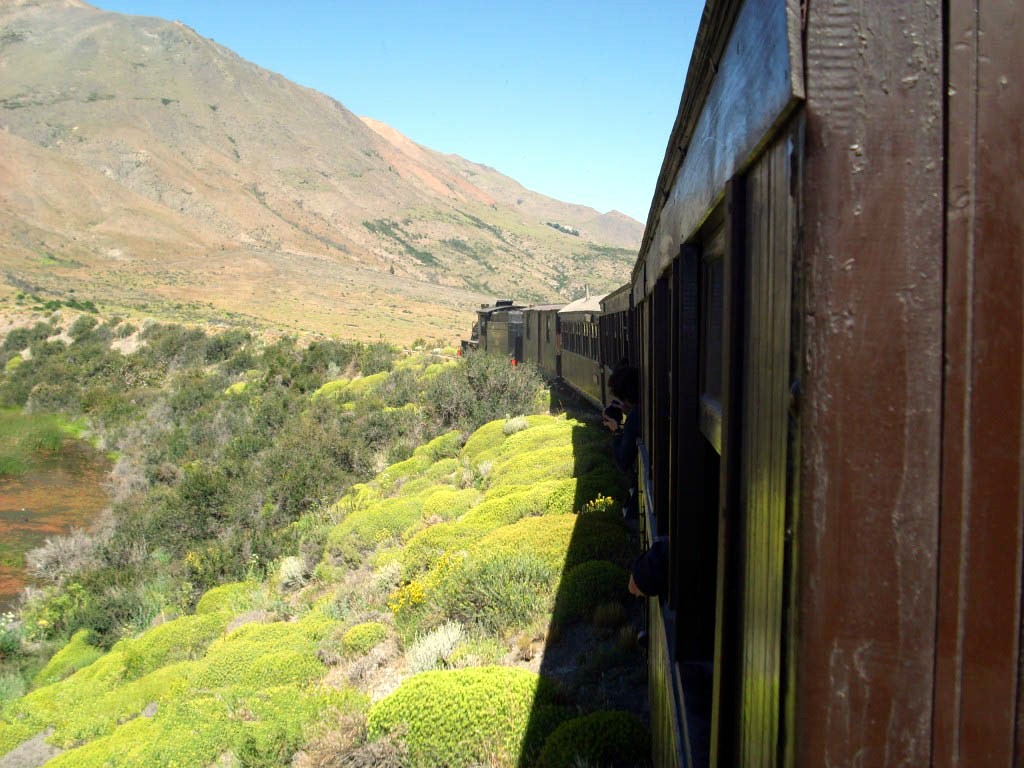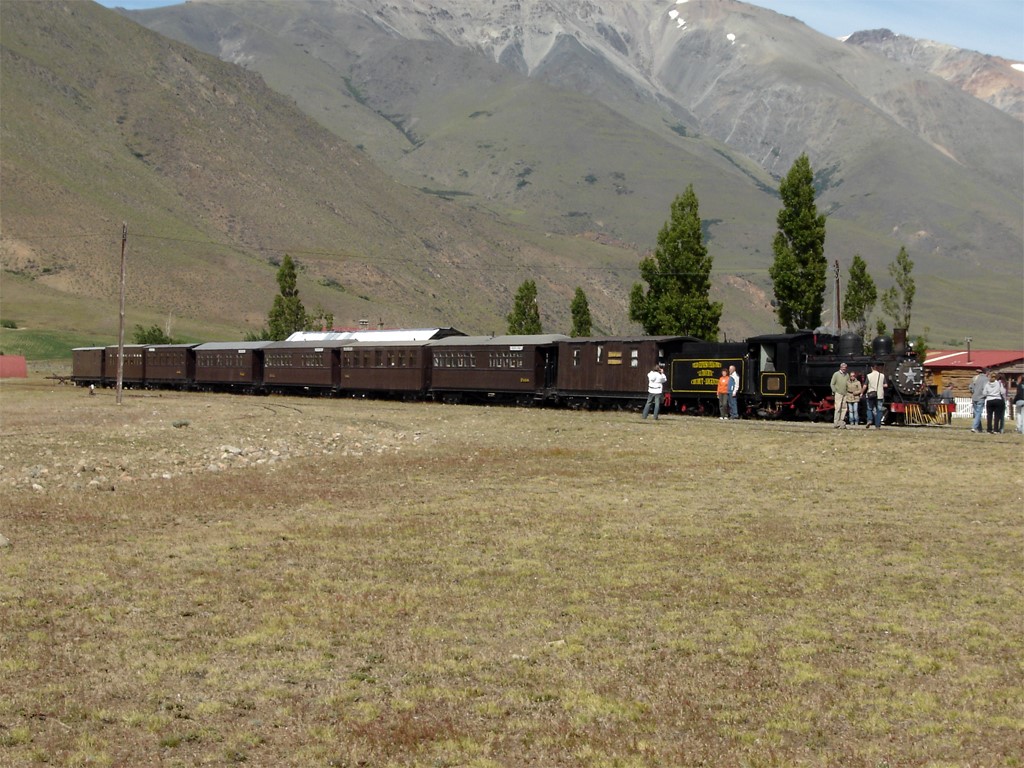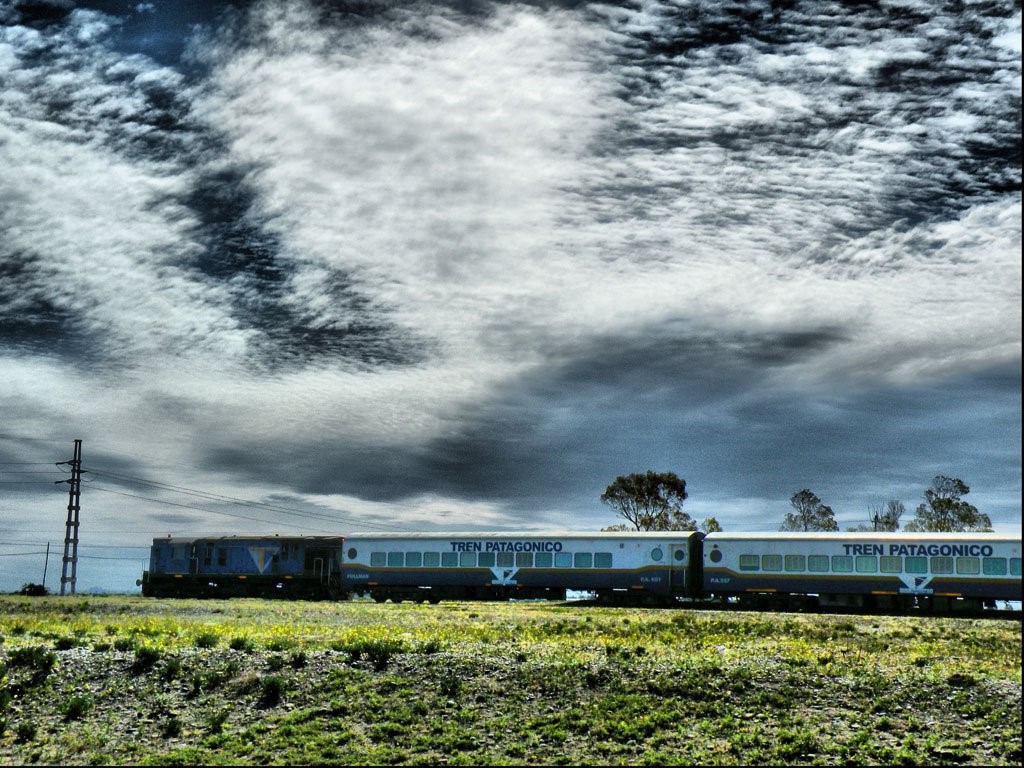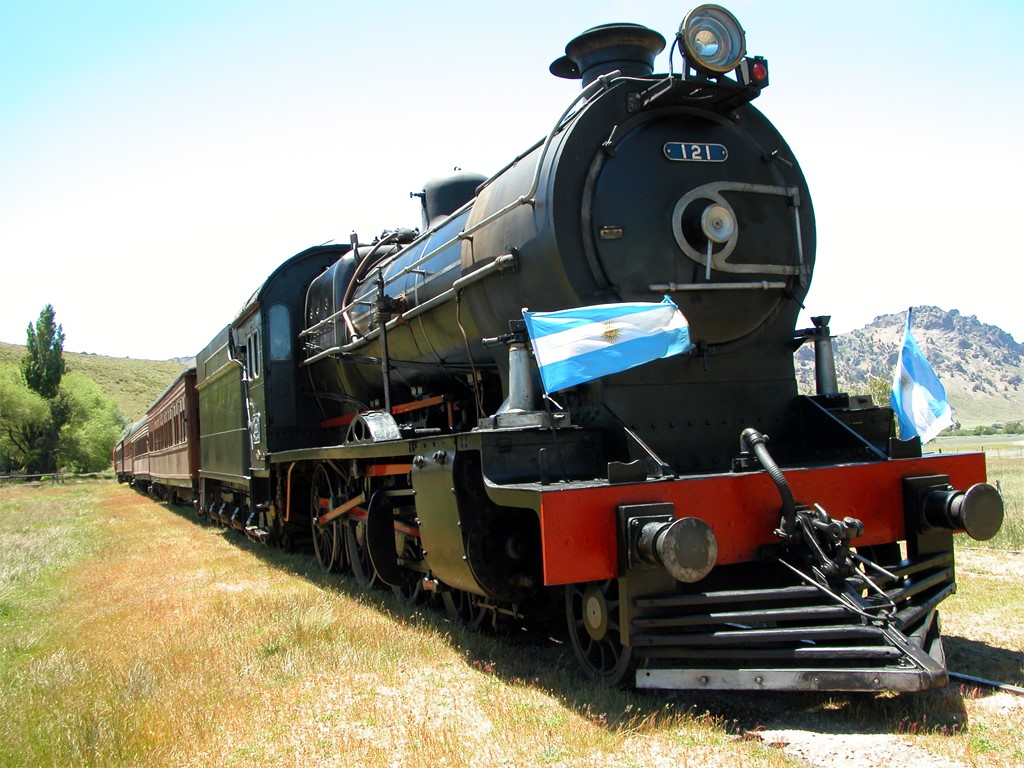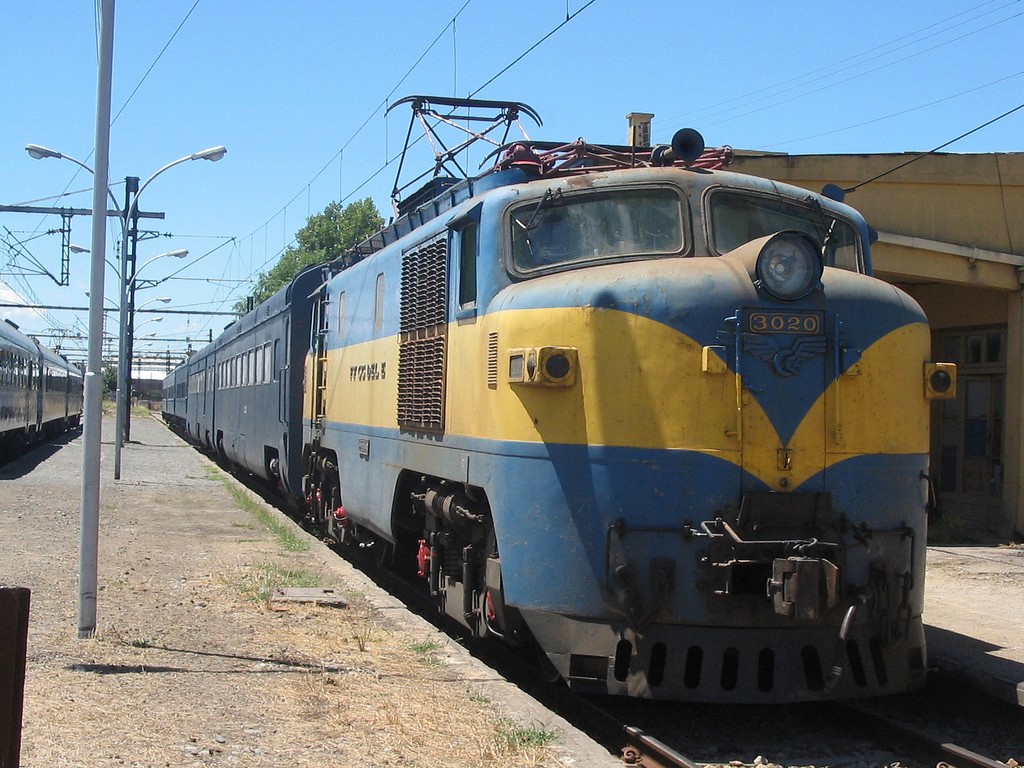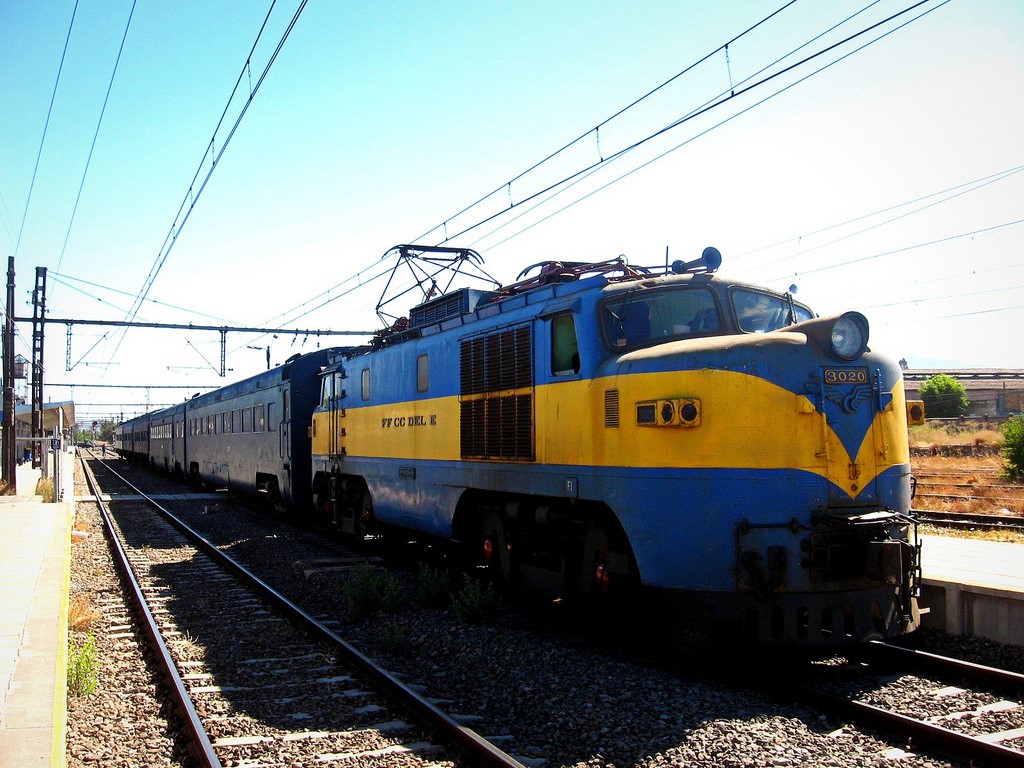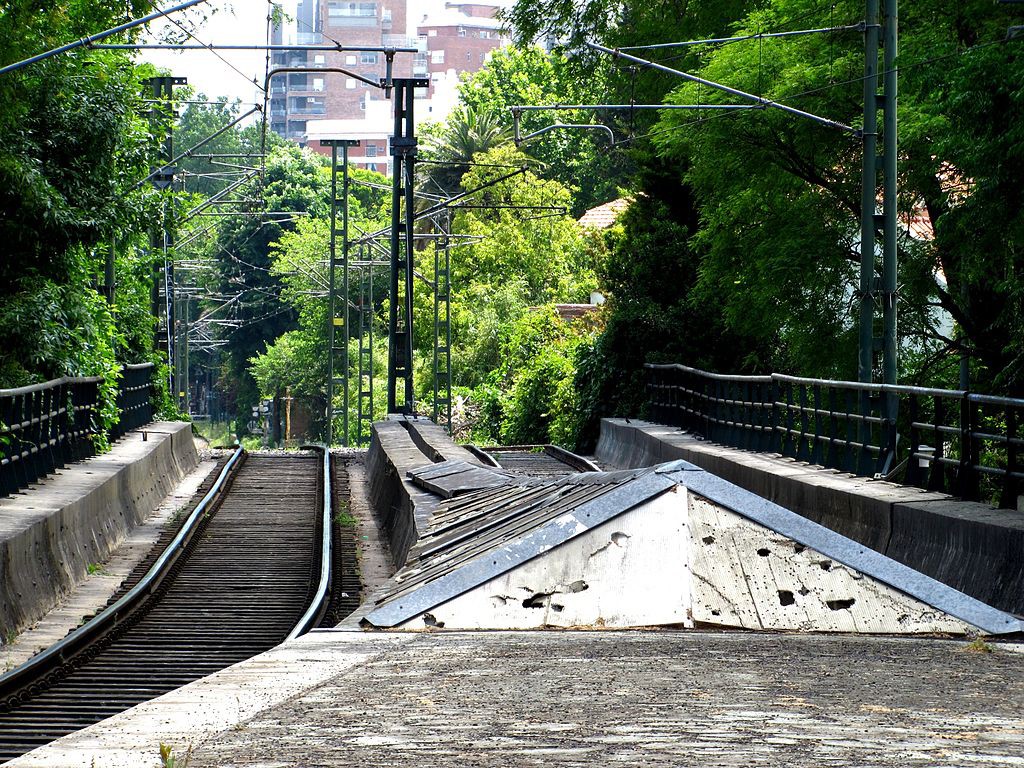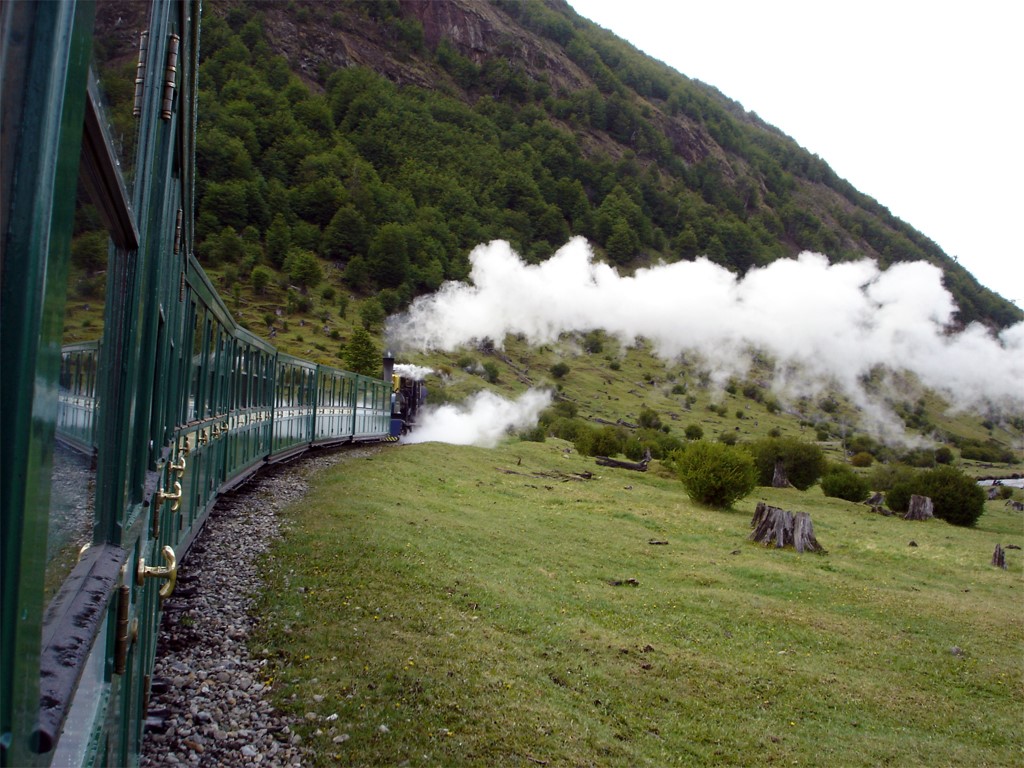Particularly unusual in Argentina and Chile, the train is a different way to explore these vast lands. With this mode of transport, not to mention the landscapes covered, you’ll be in contact with Chileans and Argentines.
Locomotives from another age will transport you back in time, into sumptuous and wild settings. I regularly suggest including a day train excursion in the trips I organize. Here are some examples of train travel that I offer you, knowing that many others are possible and in regions other than those presented below.
Travel to the Andean highlands
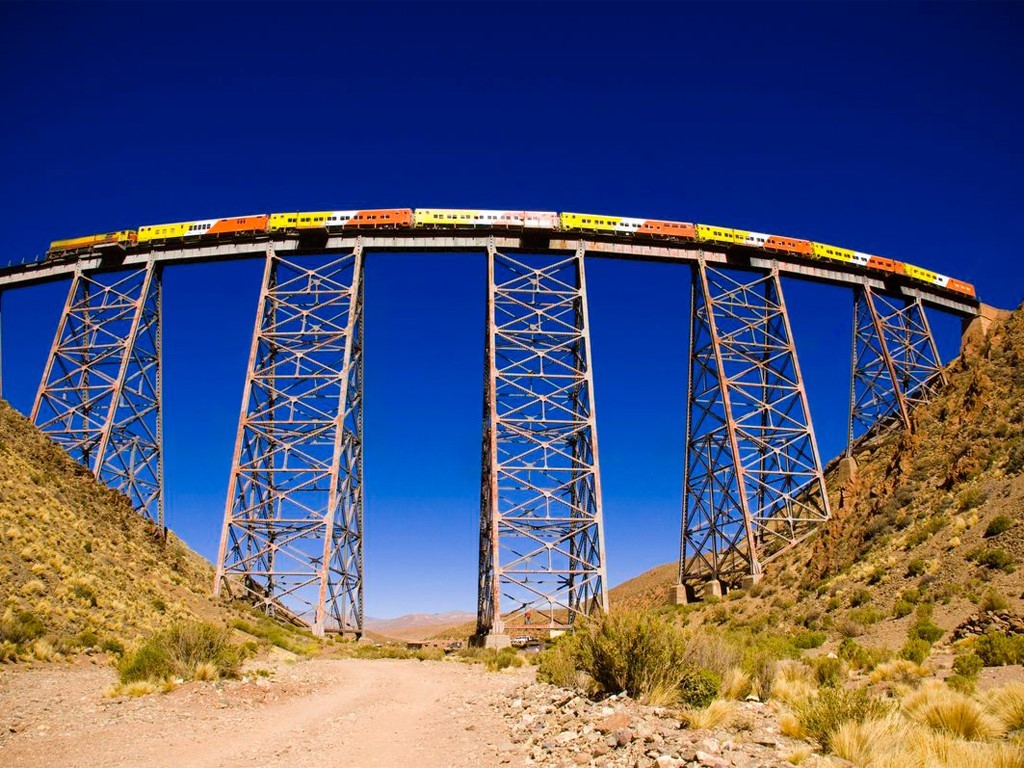
The train to the clouds
The train to the clouds “Tren a las Nubes” is a must in the La Puna region, in the northwest of Argentina. It will take you to the Polvorilla viaduct which is more than 4,000 meters above sea level. This viaduct strangely resembles the viaduct from which Tintin jumps in “The Temple of the Sun”. You’ll see the transition of the landscapes from Salta to San Antonio de los Cobres, and the contrast between the apple green of the vegetation, the red ocher, yellow and blue-gray of the mountains.
For most of the day, you’ll be at over 3,000 meters above sea level. It’s true that on the viaduct, we feel a little strange. But everything is planned for those who have altitude sickness (doctor, nurses, oxygen…). On its route, the railway crosses a total of 29 bridges, 21 tunnels, 13 viaducts, 2 corkscrews and 2 zigzags and offers travelers a truly beautiful spectacle.
You’ll stop at the viaduct for half an hour, which will allow you to take beautiful photos. In addition, you can also buy some trinkets. Also and above all, you’ll be entitled to the ceremony of anthem to the Argentine flag.
A journey through time in Patagonia
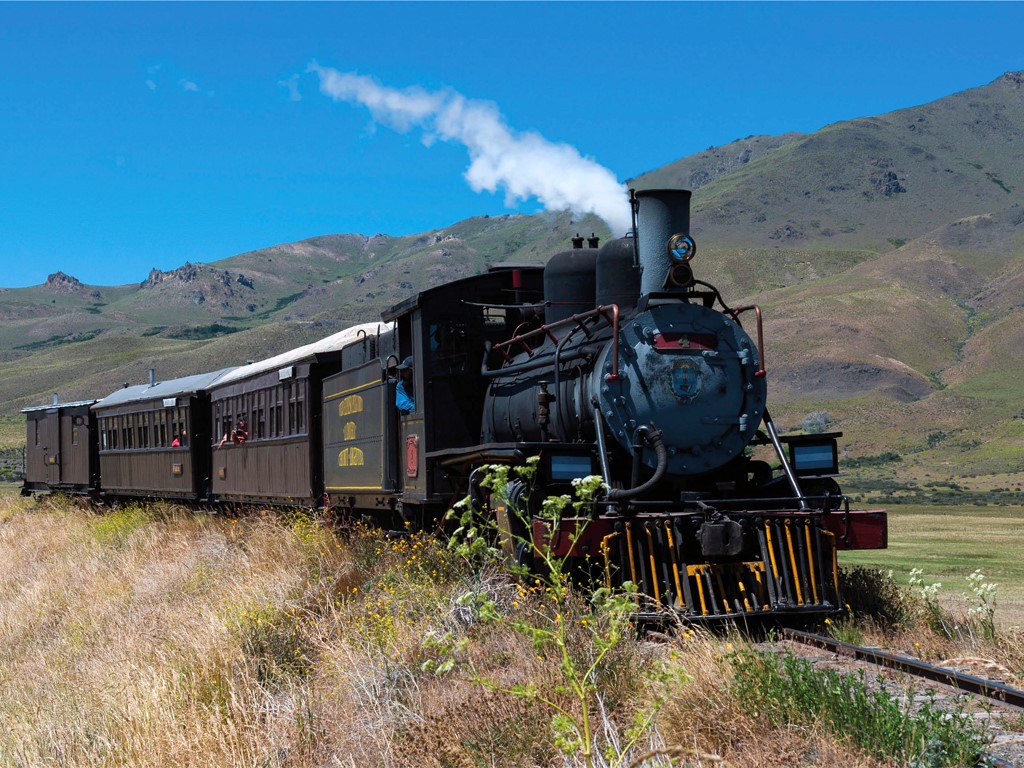
La Trochita
A symbol of Argentine history and folklore, the old Patagonian express, affectionately called La Trochita (in English The Little Path) by the locals, can be considered a living, rolling museum. The old steam train – which has the particularity of running on a narrow track, only 75 centimeters wide – still travels today from Esquel to El Maitén, passing through the department of Futaleufú for a stop at Nahuel Pan in the province of Chubut and has preserved the locomotive dating from 1922, the wooden seats and the captivating atmosphere that charmed so many travelers.
Known locally and historically as La Trochita, but officially and internationally as Viejo Expreso Patagónico (Old Patagonian Express), this branch of the former Roca network is an important tourist attraction, as it’s one of the very few of its kind and perhaps even the only one; in addition, its unique route at the foot of the Andes and thanks to the multitude of landscapes that can be observed, have given it an internationally known shine.
Due to its tourist importance and the deep attachment it enjoys among the local population, it was one of the few services that survived the Carlos Menem turmoil. It’s a real journey through time to make the journey on this train.
Crossing Patagonia
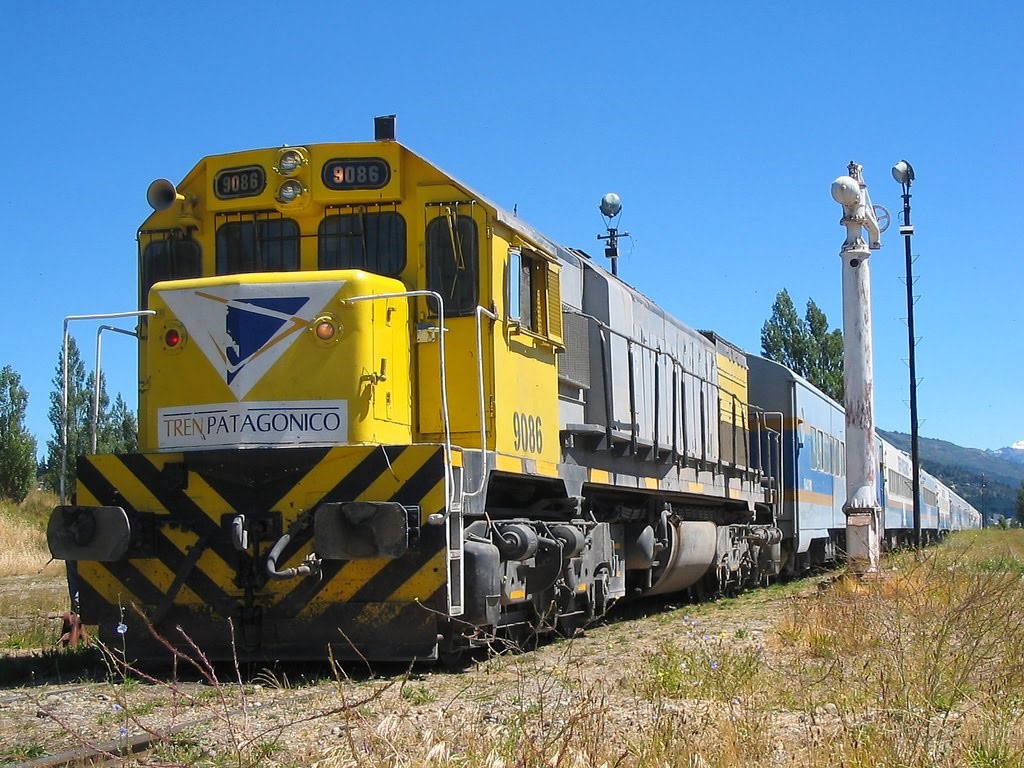
From Buenos Aires to Bariloche
The Patagonian Train (Tren Patagónico) runs through the province of Río Negro with six weekly trains and also offers a large cargo transport. It connects the cities of Bahía Blanca, Carmen de Patagones, Viedma and San Carlos de Bariloche, giving travelers the opportunity to admire the landscapes and the immensity of the Patagonian steppe.
The company has also incorporated a charter service to be used in trips of all types of contingents. This service can depart from the Plaza Constitución in Buenos Aires, or from any intermediate point, with the comfort of the “Púllman” car, restaurant, cinema and disco car, unique in the country. This adventure, because it’s a real adventure to travel on this train, will connect you from the Andes to the Atlantic.
Crossing Chile
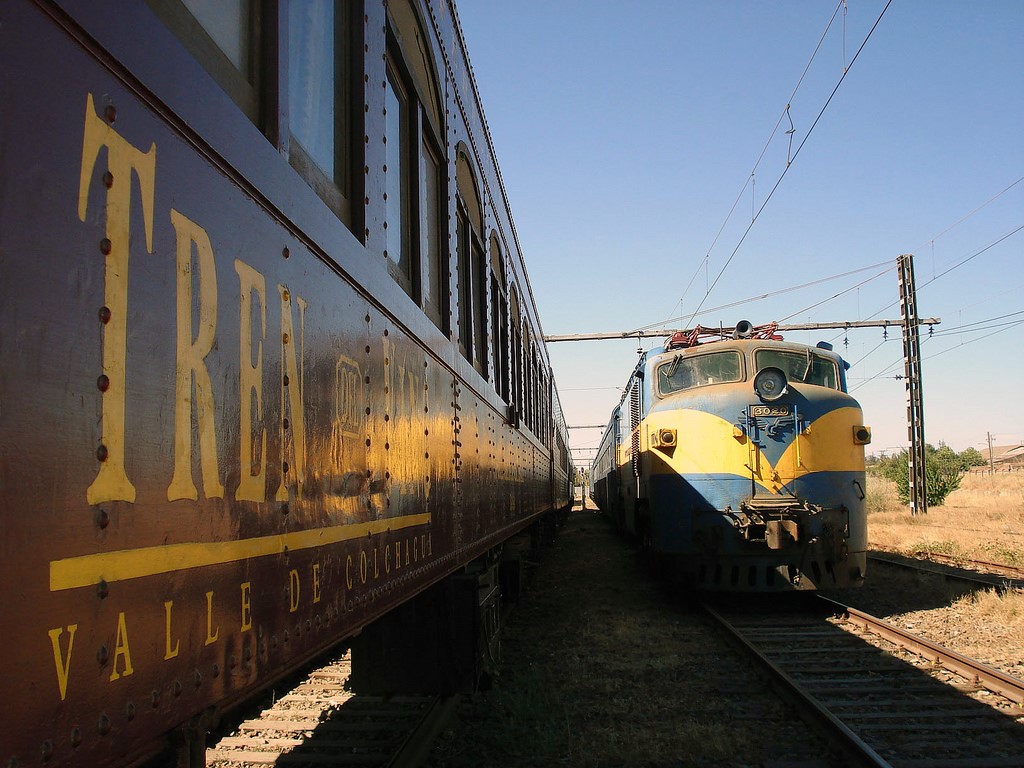
From Valparaiso to Puerto Montt
The Transpacific (Tren Transpacífico), is a train journey that you must take in Chile. It will take you from Valparaiso to Puerto Montt. 12 days of travel in total, to cross a large part of the country and admire landscapes in a different way.
Different types of wagons and berths for this adventure. The comfort and quality of service are up to the prestige of this trip to the gates of Patagonia. For those who have time…
Along the Río de la Plata

From Buenos Aires to Tigre
The Coastal Train “Tren de la Costa”, located in the province of Buenos Aires in Argentina, is a tourist train inaugurated in 1995 which travels 15.5 km passing through elegant residential areas parallel to the Río de la Plata, between the Maipú stations, in the town of Olivos (in Vicente López) and Delta, in Tigre. In its route of eleven stations, the train passes through the “Partidos” of Vicente López, San Isidro, San Fernando and Tigre.
This train has the most modern railway infrastructure in Argentina and several of its stations have been converted into real “shopping promenades”, including not only commercial premises, but also cinemas, restaurants and other facilities. From the terminus, Delta, there is very easy access to the Parque de la Costa, which according to its owners is the largest amusement park in Latin America.
The line currently includes the stations of Maipú, Borges, Libertador, Anchorena, Barrancas (formerly Las Barrancas), San Isidro R, Punta Chica, Marina Nueva, San Fernando, Canal (formerly Canal San Fernando) and Delta del Tigre.
The Southern Railway
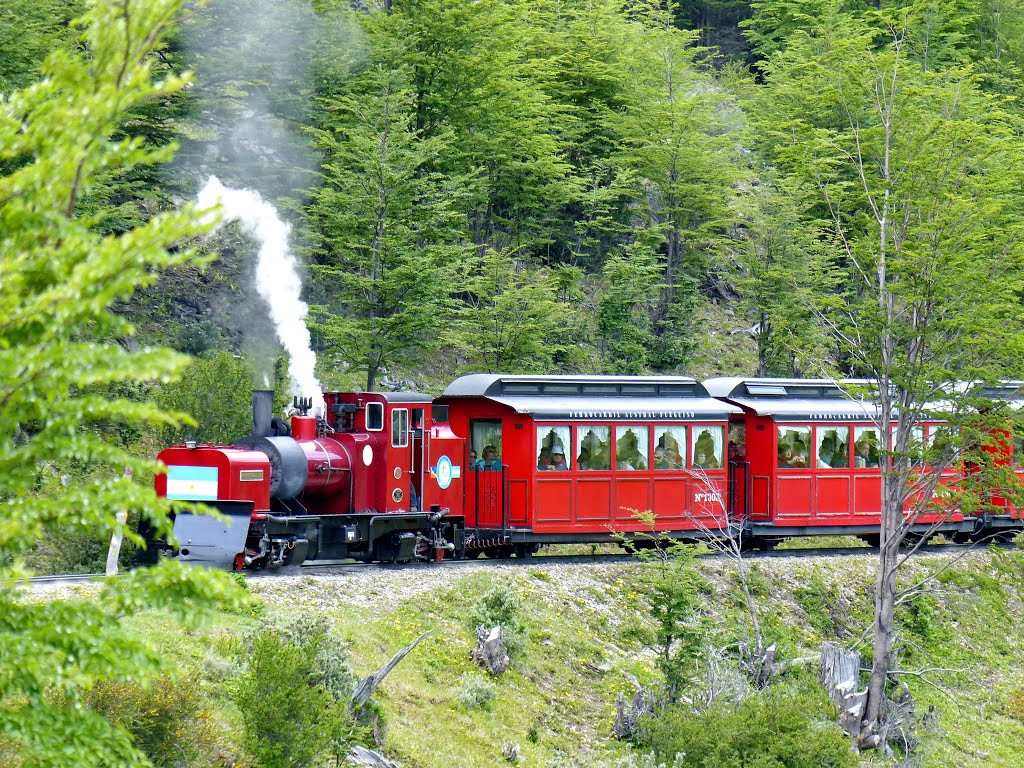
End of the World Train
The Southern Railway arrives at the End of the World Station. It’s located 8 km west of the city of Ushuaia, established in a valley between Mount Susana and the Le Martial range, on the banks of the Pipo River. It was used by prisoners from Ushuaia transported to the forced labor fields. This penitentiary establishment is closely linked to the construction of the railway.
The train is powered by a steam locomotive on narrow rails and has elegantly decorated carriages. The visit of the “End of the World Train” will make you discover part of the history of Tierra del Fuego, Ushuaia and its prison. This unique journey will take you through impressive landscapes formed by glaciers, rivers, lakes, waterfalls and virgin forests of the Andes Cordillera. The journey lasts just over 2 hours. You’ll cross centuries-old forests, rivers and valleys of great beauty.
 English
English Español
Español Français
Français

